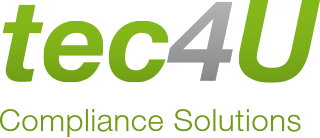CO2 Footprint Software: The competence for the procurement & calculation of PCF according to industry standards
Carbon footprint balance as an essential part of the life cycle assessment
With the European Green Deal, the EU Commission has set the ambitious goal of making the EU the first climate-neutral continent. In line with this, national legislation such as the German Climate Protection Act calls for greenhouse gas neutrality by 2045. In order to achieve such ambitious targets, it is first and foremost up to politicians to enact appropriate legislation to limit harmful emissions.
Ultimately, however, the various industries must manage the transformation. Last but not least, increasing pressure from customers, investors and consumers is an important reason for evaluating and minimizing emissions. Marketing departments are also discovering the topic for themselves and are looking for resilient data and facts to score points with customers.
At the same time, more and more companies are incorporating product-related CO2 information into the evaluation when selecting their suppliers. Parts with very high emissions are avoided as early as the development stage or replaced with parts from a supplier that can credibly demonstrate lower CO2 emissions.
The calculation of a Product Carbon Footprint (PCF) will therefore become essential and indispensable for companies that want to remain future-proof on the market.
A PCF comprises the following five life cycle phases:
- Raw material extraction
- Production
- Transportation and distribution
- Product utilization
- Waste disposal
In a cradle-to-grave approach, all five phases are considered when creating the PCF. In industry, the cradle-to-gate approach is more common. Here, only the first three phases of the product life cycle are usually considered, for example as part of the Catena-X or Manufacturing-X research projects.
What needs to be done?
The increasing number and dynamics of legal regulations (Battery Directive, ELV, Ecodesign, etc.) and ambitious customer requirements are already calling for action today. Before companies can take appropriate measures in their processes to reduce emissions, comparative values must be created. The following five steps must be carried out to determine the necessary data and facts:

- 1
Define system boundaries
Which data is valid and which requires dedicated communication with your suppliers? How can measured energy consumption be set in relation to the corresponding emissions? - 2
Measure / evaluate actual emissions and associated energy consumption
What direct / indirect emissions does your company generate, what emissions does your product generate and what indirect emissions does your supply chain generate? - 3
Calculate first CO₂ balance
Which data is valid and which requires dedicated communication with your suppliers? How can measured energy consumption be set in relation to the corresponding emissions? - 4
Derive and formulate reduction targets and measures
Do you as a company want to become “climate neutral”? If so, by when? Or do you want to set specific reduction targets for your company or your products? - 5
Take measures to achieve objectives and monitor their effectiveness
Which goals can be achieved quickly with simple measures and where do you need to make long-term investments? Who is responsible for which measures in which company processes?
How can tec4U-Solutions support you?
We work with you to create a reliable PCF in accordance with industry standards, set reduction targets and introduce suitable measures. In addition, we support you in the sustainable monitoring of the agreed product adjustments and carry out regular effectiveness analyses. In doing so, we consider all three scopes of CO2 balancing:

Direct Emissions
Energy sources at the site
(natural gas, coolants, fuels …)

Indirect Emissions
Purchased energy
(electricity, steam, district heating …)

Indirect Emissions Supply Chain
Enquiries about emissions in the upstream supply chain
The CO₂ module in DataCross
The CO₂ module in our sustainability compliance software DataCross is a highly efficient and effective tool for supplier communication to obtain the necessary emission values.

The CO2 module offers you the following functionalities:
We also support you in validating the data, deriving and monitoring effective measures and providing the following consulting and services:
With the CO₂ module and our accompanying services, you can make a demonstrable contribution to the statutory CO₂ reduction targets and make your company fit for a more sustainable future!
Any questions?
We are looking forward to your contact.
Stefan Nieser
We look forward to supporting you.


